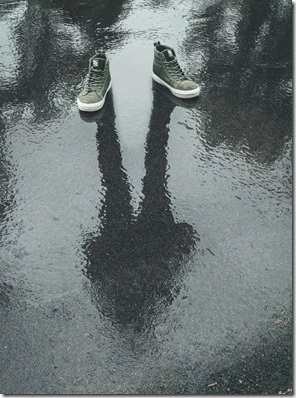 They sound alike and look alike. They're not the same thing. Here's how to tell the difference between schizophrenia and schizoaffective disorder.
They sound alike and look alike. They're not the same thing. Here's how to tell the difference between schizophrenia and schizoaffective disorder.
The DSM devotes a chapter to Schizophrenia Spectrum and Other Psychotic Disorders. Included there: delusional disorder (delusions without other schizophrenia symptoms), brief psychotic disorder (psychotic symptoms present less than one month), schizophreniform disorder (symptoms lasting for less than six months), catatonia, and substance/medication-induced and due-to-another-medical-condition psychotic disorder (describe themselves).
What's left: schizophrenia and schizoaffective disorder. Here are the criteria for schizophrenia:
A. Two or more present for bulk of a one-month period: delusions, hallucinations, disorganized speech, grossly disorganized or catatonic behavior, and/or negative symptoms.
B. Symptoms disturb level of functioning.
C. Signs of disturbance last for at least 6 months.
D. Schizoaffective and bipolar disorder ruled out.
E. Symptoms not due to the effects of a substance or medical condition.
Schizoaffective disorder is diagnosed when these criteria are met. Watch for the difference. It'll come up right away:
A. A major mood episode concurrent with criterion A of schizophrenia.
B. Delusions of hallucinations for two or more weeks without a major mood episode during the lifetime duration of the disorder.
C. A major mood episode is present for the majority of the illness.
D. Symptoms not due to the effects of a substance or medical condition.
Specifiers for schizoaffective disorder include bipolar type, depressive type, and with catatonia.
TL;DR? They're very similar. Both include some combination of delusions, hallucinations, disorganized speech, grossly disorganized or catatonic behavior, and/or negative symptoms. But in schizoaffective disorder, a major mood episode is present most of the time (though not 100% of the time). Why not 100%? Because then you'd be looking at MDD or bipolar I with psychotic features. A topic for another blog post
So how do you boil this down into something simple and memorable? How about this: Schizoaffective disorder is like schizophrenia, but includes a big mood component generally occurring alongside psychotic symptoms.
ASWB exam preppers, see if the above helps you answer this question correctly:
A social worker sees a client who reports a lifetime of "seeing things all the time, shadows." He also reports hearing voices, "probably the NSA," which tell him he's "useless and stupid." The voices leave him feeling "pretty sad and really annoyed." Given the symptoms the client describes, what is the MOST likely of the following DSM diagnoses?
A. Major depression with psychotic features
B. Schizophrenia
C. Schizophreniform disorder
D. Schizoaffective disorder
What do you think?
The client appears to meet criteria for some psychotic disorder, given that he reports a lifetime of psychotic symptoms (hallucinations and delusions). The lifetime duration means schizophreniform disorder isn't the correct answer. Narrowing down between the three left standing depends upon your reading of "pretty sad and really annoyed." Sounds like the client gets in a bad mood due to his symptoms. Does that bad mood rise to the level of MDD? It does not. So scratch A. And while you're at it, since schizoaffective disorder requires MDD or bipolar disorder symptoms alongside schizophrenia symptoms, scratch that one as well. Now you're left with one answer, the correct answer as it happens: B, schizophrenia.
For more practice questions from the DSM, about psychotic disorder diagnosis, and other close-call social work situations, sign up with SWTP!
[Post by Will Baum, LCSW]

 They sound alike and look alike. They're not the same thing. Here's how to tell the difference between schizophrenia and schizoaffective disorder.
They sound alike and look alike. They're not the same thing. Here's how to tell the difference between schizophrenia and schizoaffective disorder.